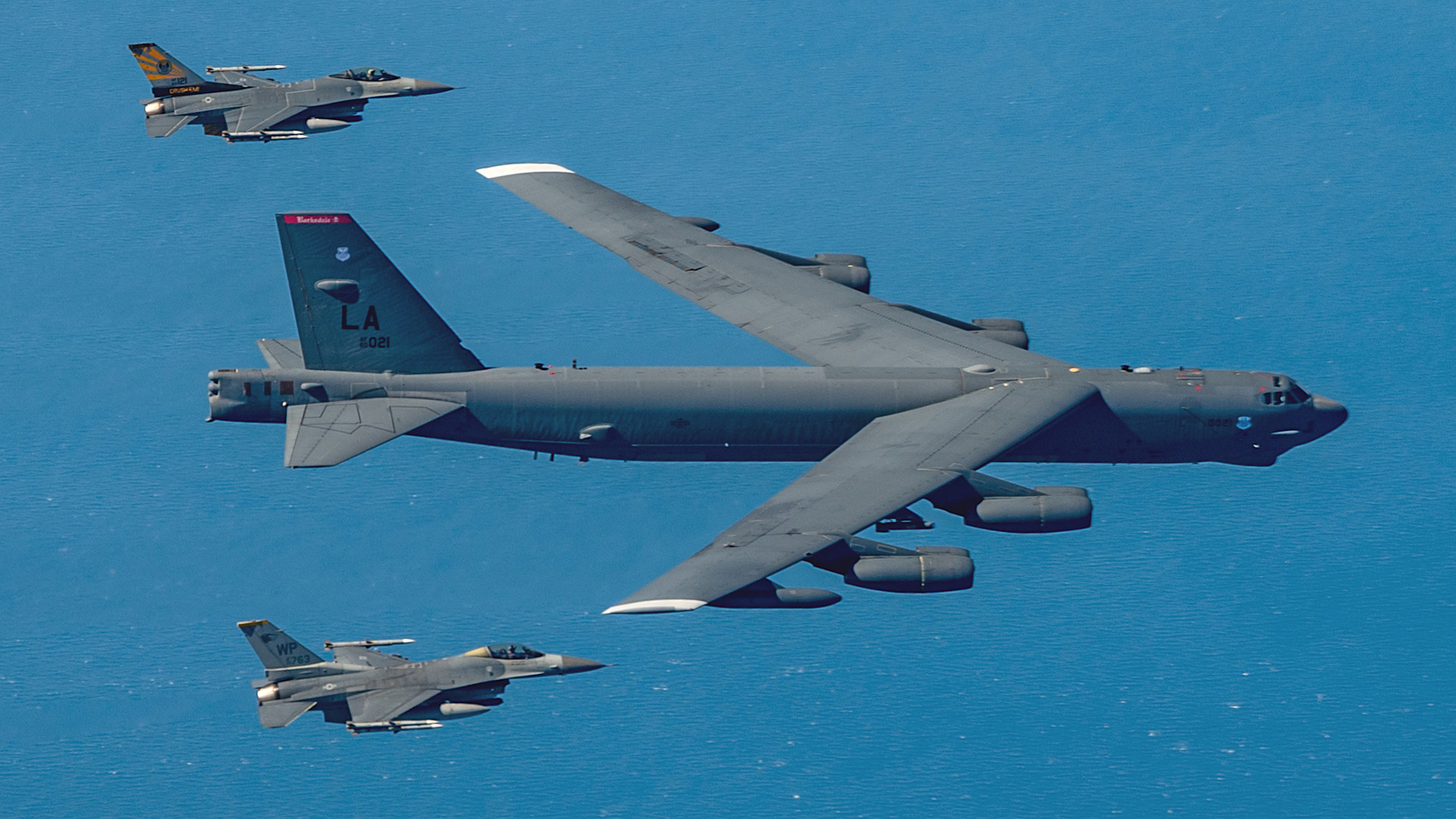A U.S. Air Force B-52H bomber that recently made a rare stopover in South Korea and then took part in a first-of-its-kind trilateral U.S.-South Korean-Japanese aerial exercise caught The War Zone‘s attention for another reason: its bright white wing tips. We subsequently reached out to figure out what the significance of this was and have now gotten a response from the 2nd Bomb Wing at Barksdale Air Force Base in Louisiana.
The B-52H in question, serial number 60-0021, landed at Cheongju International Airport in South Korea on October 17 and subsequently participated 2023 Seoul International Aerospace and Defense Exhibition (ADEX). This was the first time in at least 30 years that a B-52 had touched down in the country and reflects a new level of U.S.-South Korean strategic cooperation, primarily meant to deter North Korea, which the two countries first announced earlier this year.

On October 22, 60-0021 flew together with F-16C Viper, F-2, and F-15K Slam Eagle fighters from the U.S. Air Force, the Japan Air Self Defense Force, and the South Korean Air Force, respectively, as part of the first formal trilateral aerial exercise the three countries have ever carried out together. Like the landing in South Korea, this collective show of force also looked to be primarily directed at North Korea. It demonstrated the unity of the three allies to other regional competitors, including China and Russia, as well.


As to 60-0021’s white wing tips, which were very visible in the pictures from the trilateral exercise, the 2nd Bomb Wing’s public affairs office provided the following details:
“To answer your question, [B-52] wing tips are masked off during strip and paint of the aircraft during PDM (Program Depot Maintenance). Due to the stripping compound that is used during the process, wing tips are covered so that the compound won’t deteriorate the coating of the fiberglass. Wing tip replacement is a one-time replacement during PDM and this particular jet has not had them replaced yet.”
The War Zone had already gone back and back and reviewed older B-52 pictures, with many showing lighter-colored or otherwise discolored wing tips.


Program Depot Maintenance, sometimes also written as Programmed Depot Maintenance, involves a major overhaul and also offers opportunities for important upgrades and modifications to be made to the aircraft. PDM for the Air Force’s B-52 fleet takes place at Tinker Air Force Base in Oklahoma.
As of 2021, each one of the service’s 76 B-52s was typically scheduled to undergo the months-long PDM process every four years. This scheduling is, of course, staggered to keep a certain number of bombers on active duty at any one time.

For the B-52, depot-level maintenance looks set to become even more significant in the coming years. Though the Air Force has not yet made a final decision, it is likely that these bombers will receive their new sets of Rolls-Royce F130 jet engines as part of future PDM cycles. The B-52 re-engining program, an upgrade effort that has been years (decades really) in the making, will give these aircraft huge boosts in performance and fuel economy, as you can learn more about here.

The Air Force’s entire B-52 fleet is slated to get new, more capable actively electrically-scanned array radars in the coming years. This is another very important upgrade program and that could also be added to the PDM process.
The B-52s, which are currently set to keep flying at least until 2050, are in line to get various other upgrades and modifications. Ultimately, what will eventually be redesignated as B-52Js are expected to have a distinctly modified outward appearance.

Altogether, in the coming years, we can expect to continue seeing B-52s sporting white wing tips, as well as a growing number of more dramatic additions.
Editor’s note: Special thanks to Matthew Haden for pointing the BUFF’s white tips out to us!
Contact the author: joe@thedrive.com
